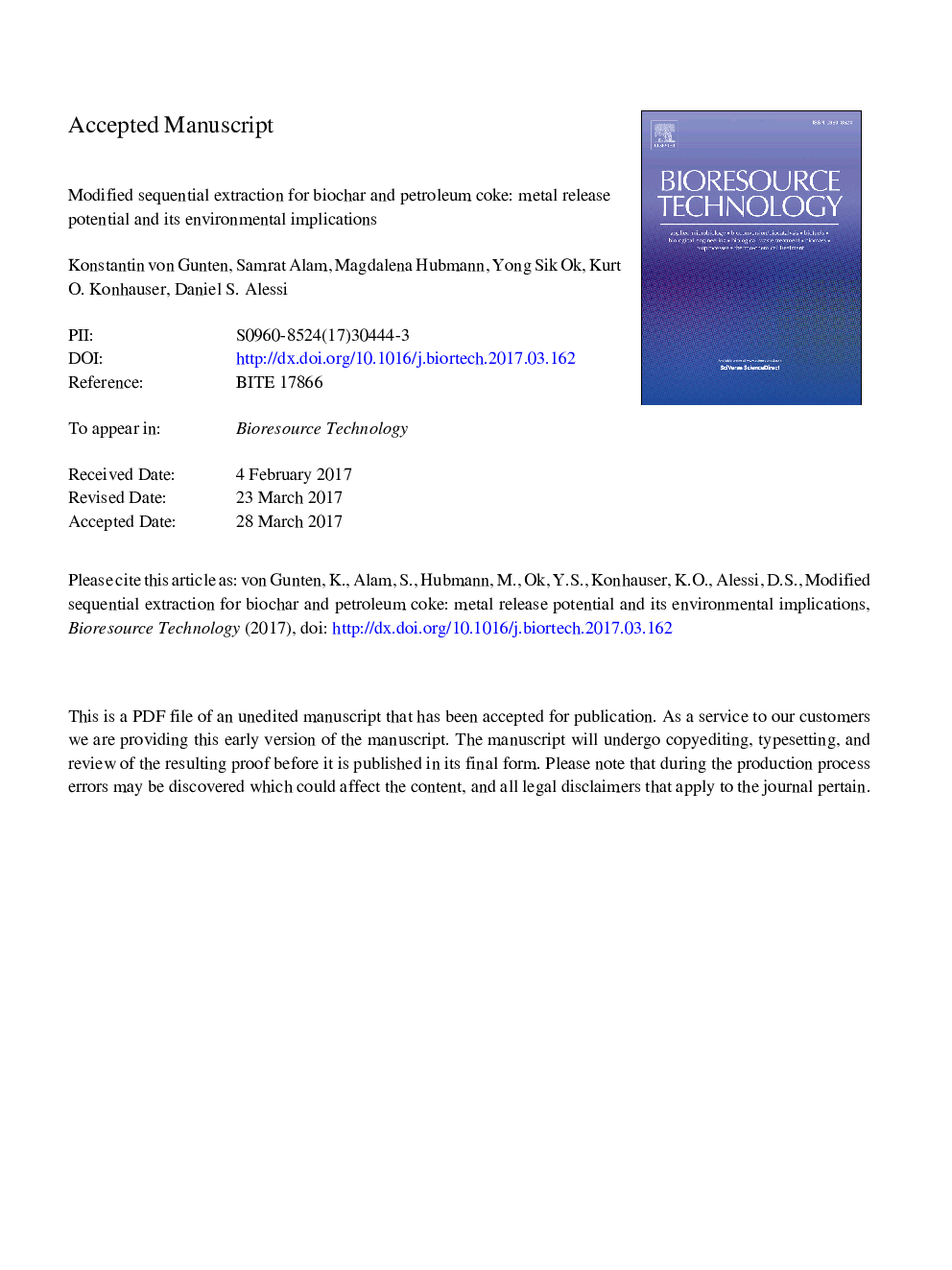| Article ID | Journal | Published Year | Pages | File Type |
|---|---|---|---|---|
| 4997102 | Bioresource Technology | 2017 | 17 Pages |
Abstract
A modified Community Bureau of Reference (CBR) sequential extraction method was tested to assess the composition of untreated pyrogenic carbon (biochar) and oil sands petroleum coke. Wood biochar samples were found to contain lower concentrations of metals, but had higher fractions of easily mobilized alkaline earth and transition metals. Sewage sludge biochar was determined to be less recalcitrant and had higher total metal concentrations, with most of the metals found in the more resilient extraction fractions (oxidizable, residual). Petroleum coke was the most stable material, with a similar metal distribution pattern as the sewage sludge biochar. The applied sequential extraction method represents a suitable technique to recover metals from these materials, and is a valuable tool in understanding the metal retaining and leaching capability of various biochar types and carbonaceous petroleum coke samples.
Related Topics
Physical Sciences and Engineering
Chemical Engineering
Process Chemistry and Technology
Authors
Konstantin von Gunten, Md. Samrat Alam, Magdalena Hubmann, Yong Sik Ok, Kurt O. Konhauser, Daniel S. Alessi,
